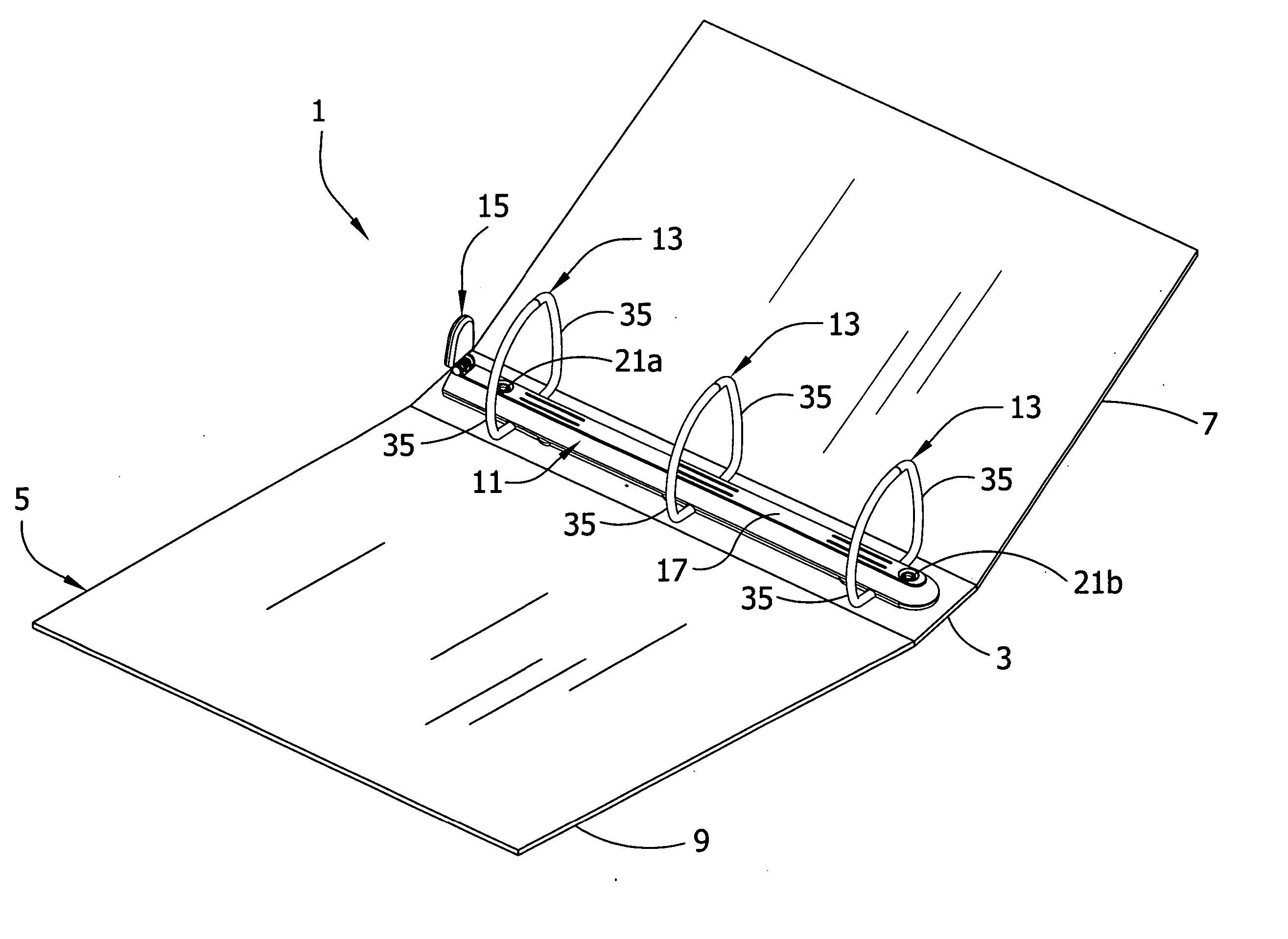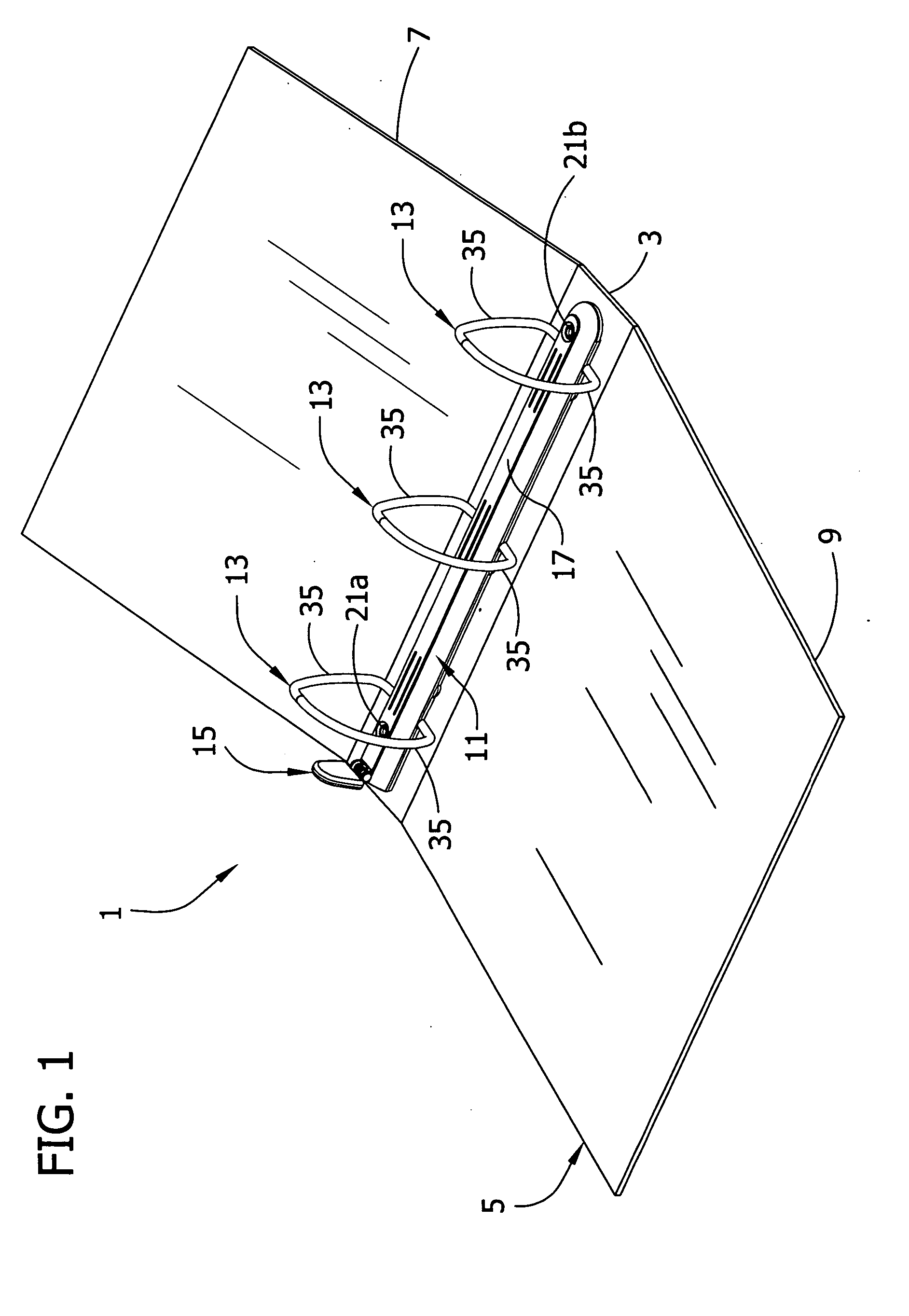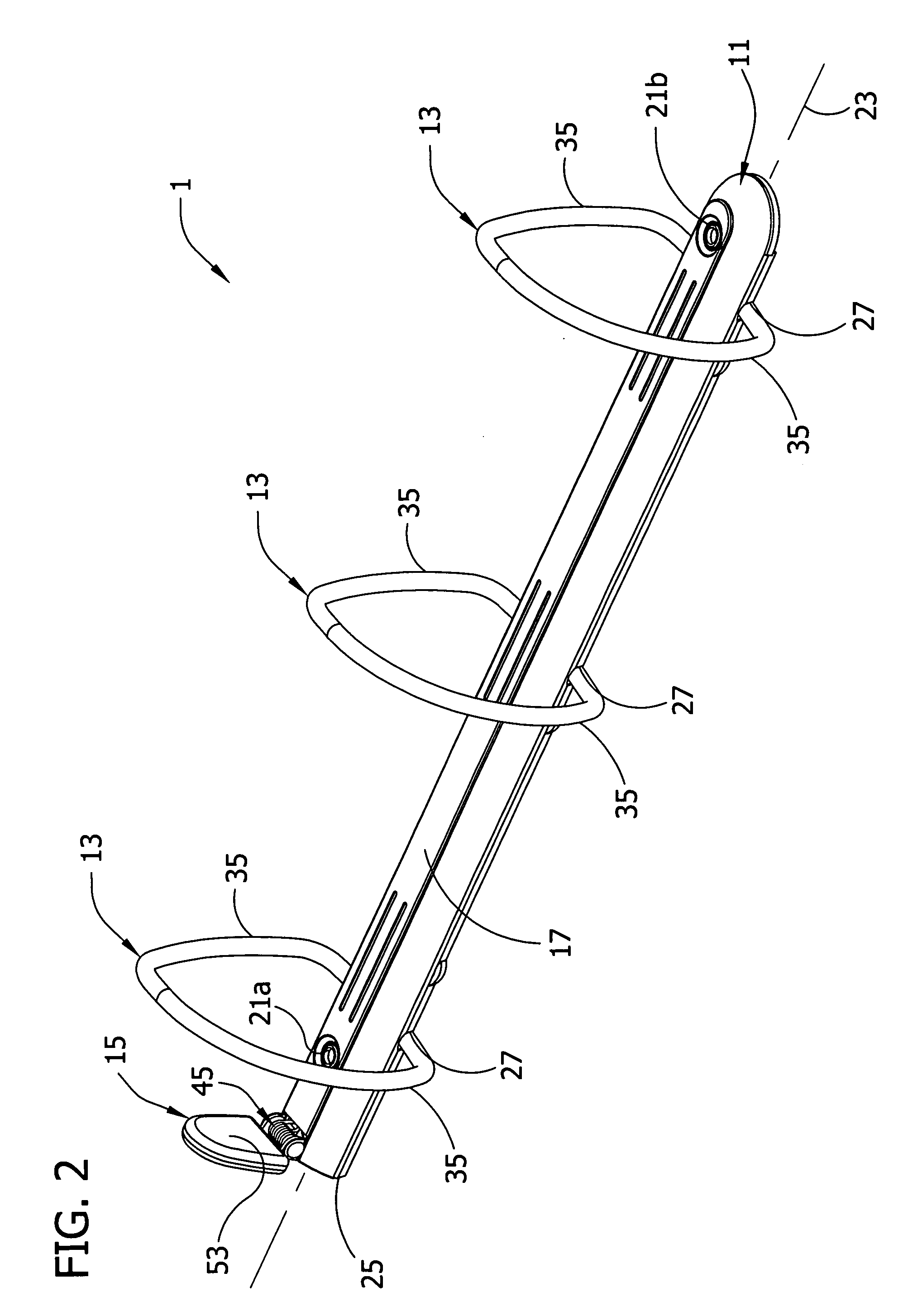Ring binder mechanism spring biased to a locked position when ring members close
a ring binder and locking mechanism technology, applied in the field of ring binder mechanism, can solve the problems of affecting the operation of the ring binder, the pinched pinched pinched between the ring members, and the pivoting of the hinge plate,
- Summary
- Abstract
- Description
- Claims
- Application Information
AI Technical Summary
Benefits of technology
Problems solved by technology
Method used
Image
Examples
first embodiment
[0043] Referring now to the drawings and in particular to FIG. 1, a ring binder mechanism according to the invention for retaining loose-leaf pages (the pages are not shown in the drawings) is indicated generally at reference numeral 1. The mechanism 1 is shown mounted on a spine 3 of a notebook (the notebook being indicated generally at reference numeral 5) having a front cover 7 and a back cover 9 hingedly attached to the spine. The front and back covers 7 and 9 move to selectively cover or expose retained pages. Ring binder mechanisms mounted on surfaces other than a notebook, however, do not depart from the scope of this invention.
[0044] As shown in FIGS. 2 and 3, the mechanism 1 includes an elongate plate, also termed a housing and indicated generally at reference numeral 11, supporting three rings, each indicated generally at reference numeral 13 (FIG. 2). A lever (broadly, “an actuator”), designated generally at reference numeral 15, is pivotally mounted on a first longitudin...
second embodiment
[0079] The actuating lever 515 of this mechanism 501 is also illustrated in FIG. 20 and includes an enlarged head 553 extending from a narrow body 555. A flat opening arm 532 is located toward a bottom of the lever body 555, extending away from the body, and may be integral with the lever body 555 or may be attached to the lever body. A mechanism having a lever or opening arm shaped differently than illustrated does not depart from the scope of the invention. Also in this mechanism 501, the intermediate connector 539 located between the lever 515 and travel bar 541 is bent downward at the open end 539a, while the travel bar, which extends away from the connector 539, includes one elongate opening 542b recessed into its top and bottom surfaces generally at a location corresponding to the location of the additional opening 518b in the housing plateau 517. In addition, a spring plate, designated generally at reference numeral 544, and a core 580 interact with the lever 515 for urging i...
PUM
 Login to View More
Login to View More Abstract
Description
Claims
Application Information
 Login to View More
Login to View More - R&D
- Intellectual Property
- Life Sciences
- Materials
- Tech Scout
- Unparalleled Data Quality
- Higher Quality Content
- 60% Fewer Hallucinations
Browse by: Latest US Patents, China's latest patents, Technical Efficacy Thesaurus, Application Domain, Technology Topic, Popular Technical Reports.
© 2025 PatSnap. All rights reserved.Legal|Privacy policy|Modern Slavery Act Transparency Statement|Sitemap|About US| Contact US: help@patsnap.com



